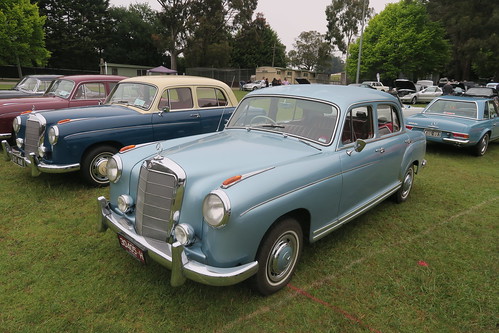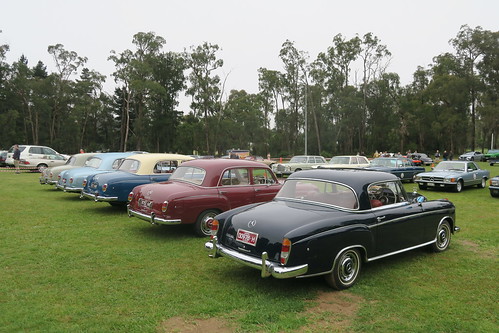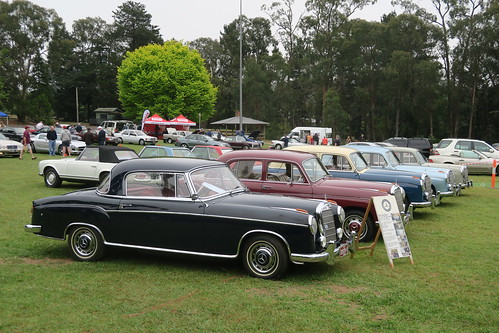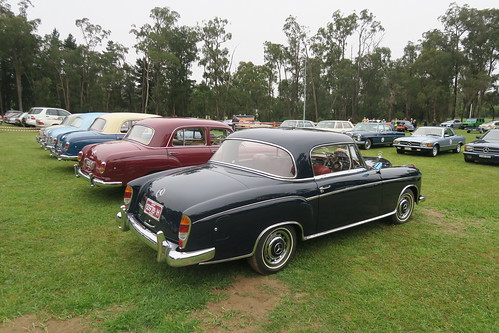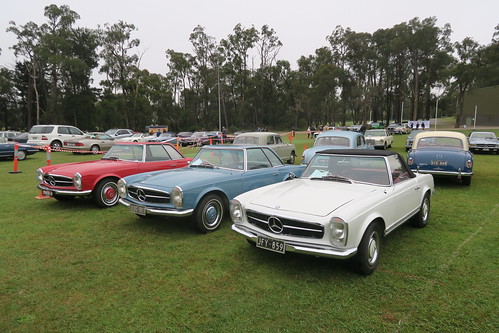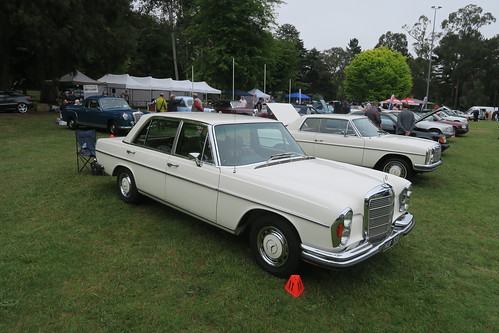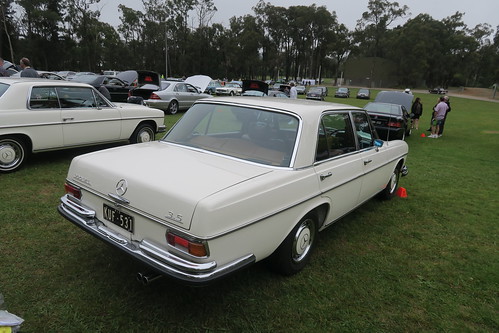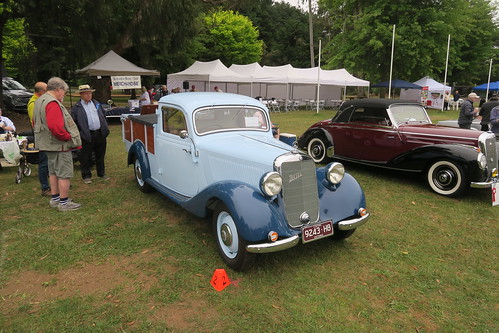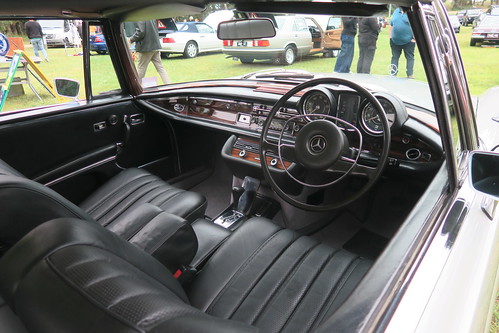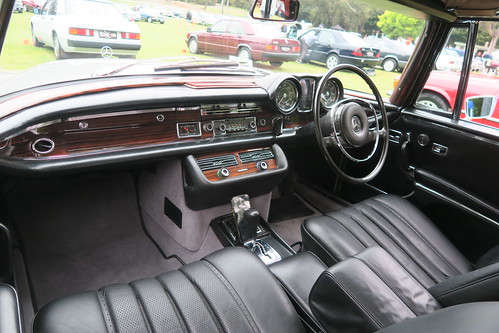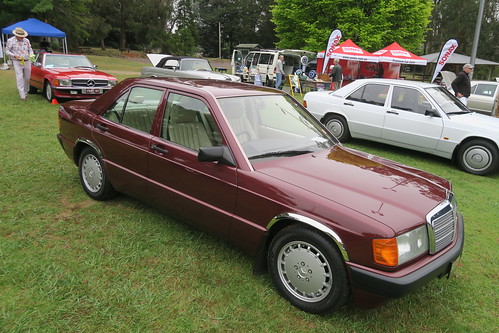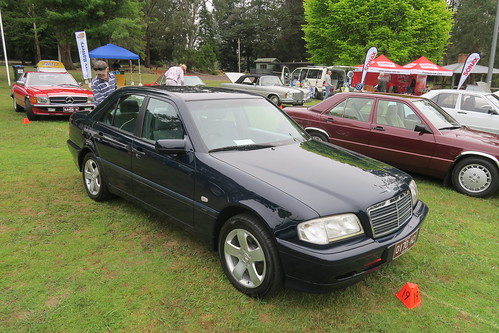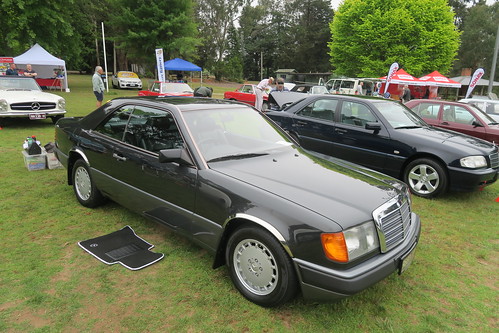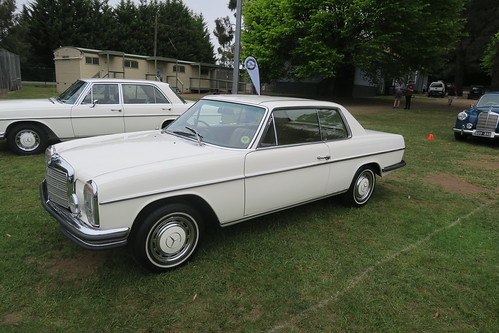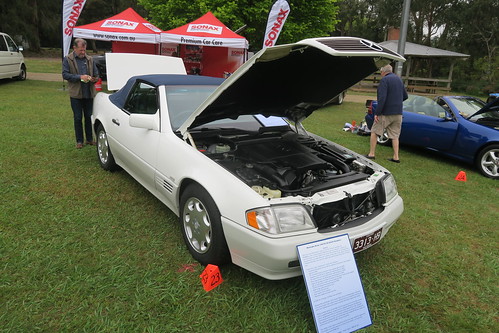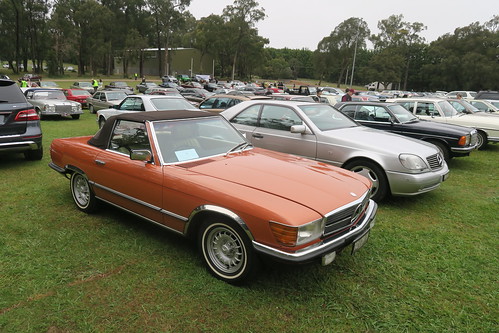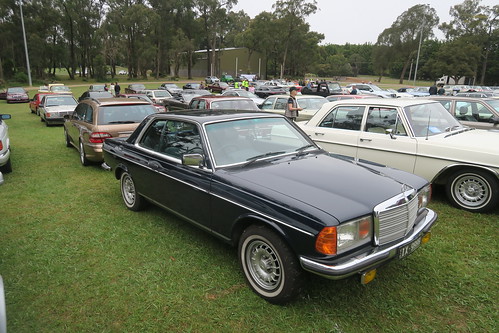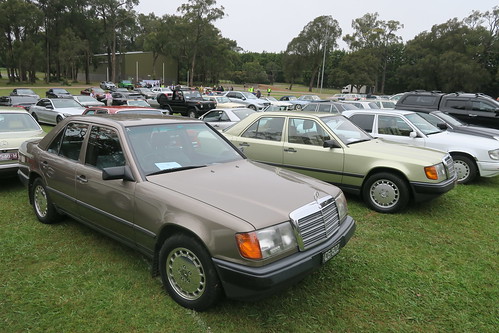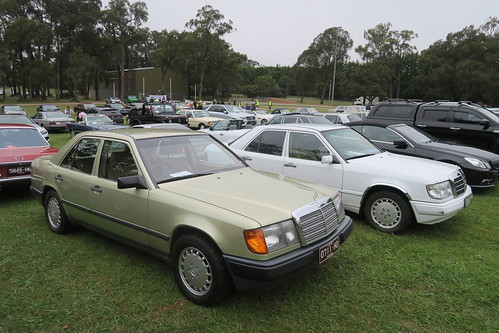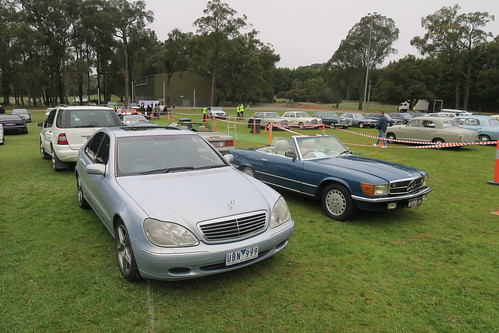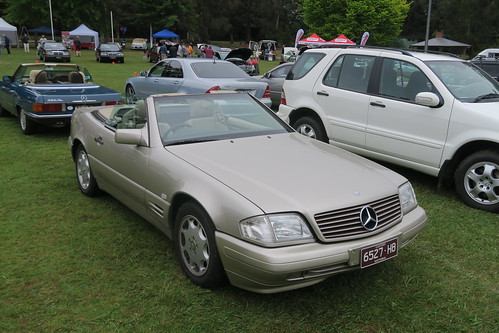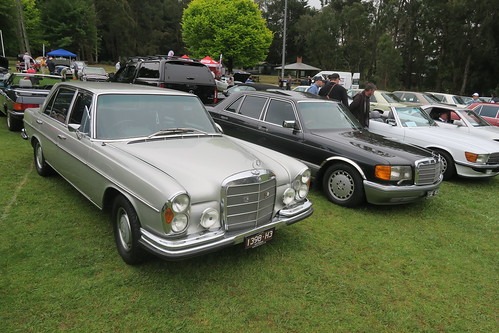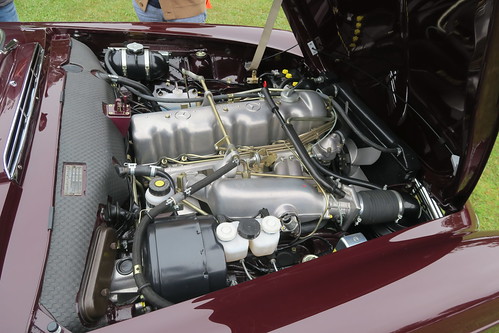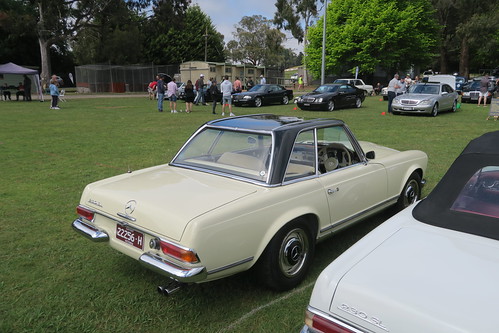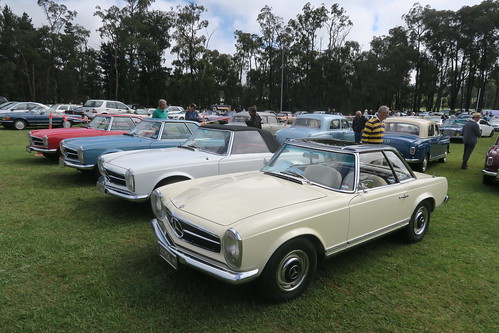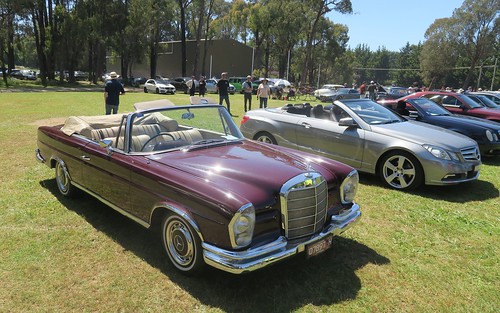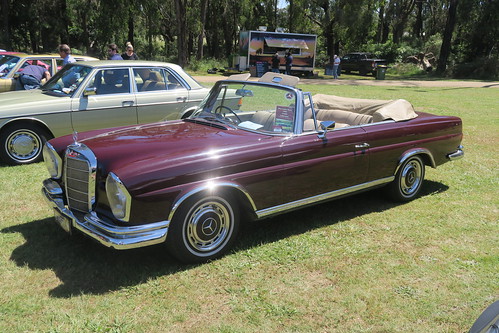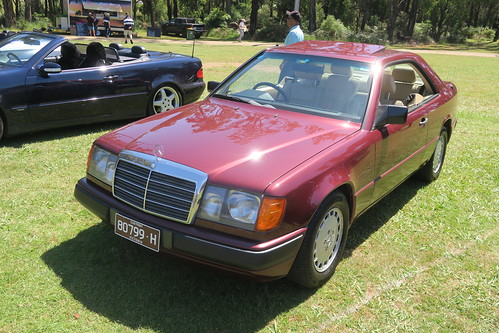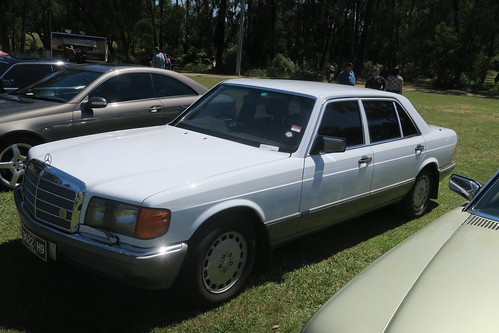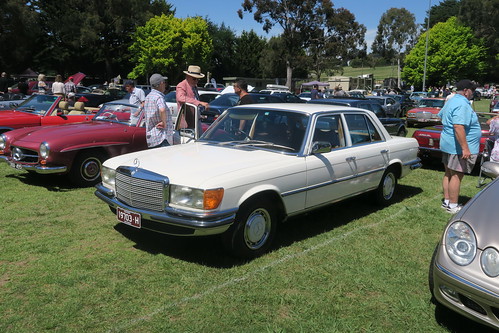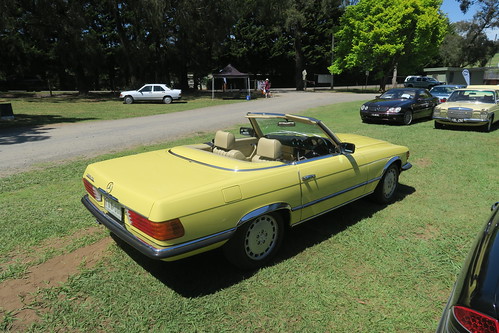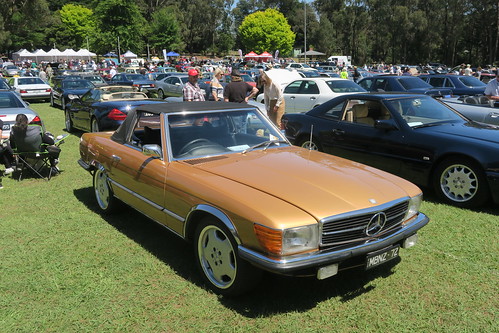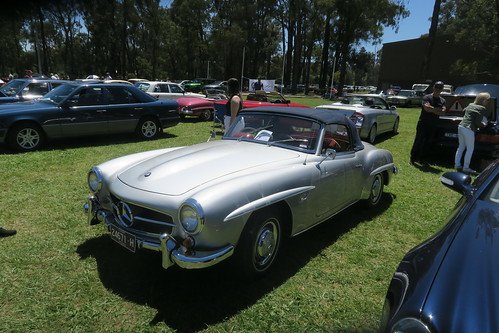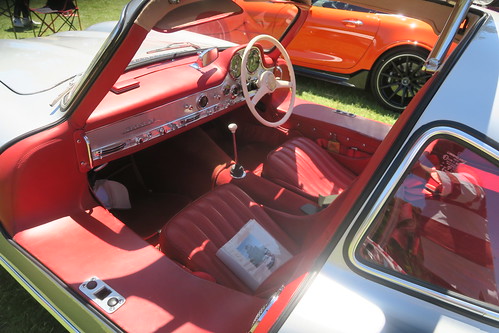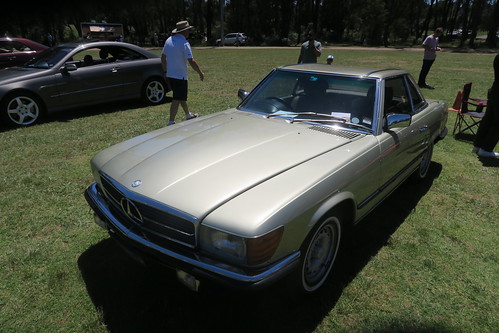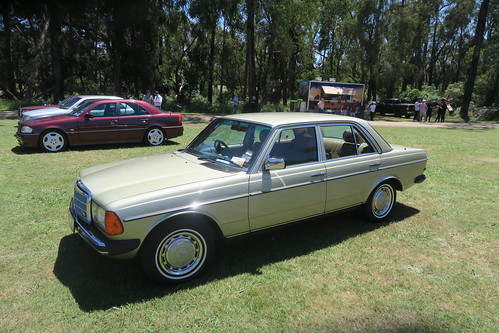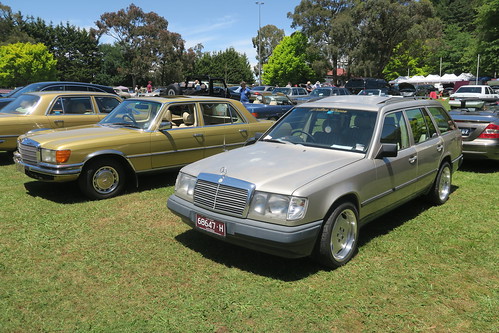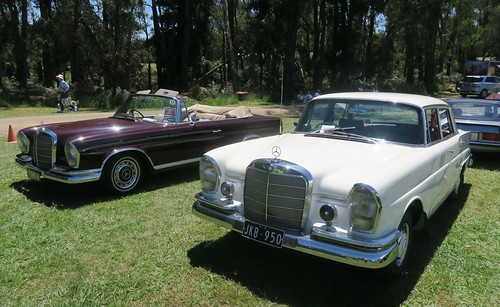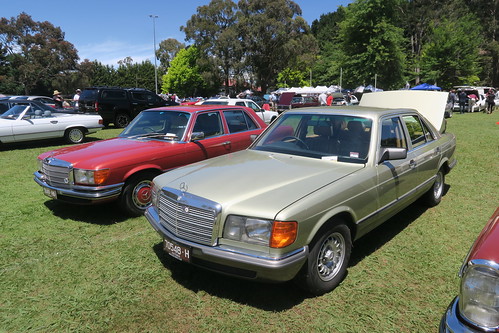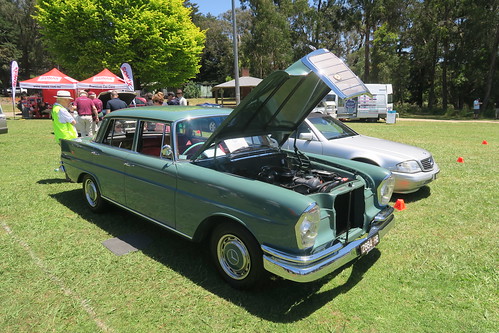| Last year I did a road trip in classic Mercedes to the National Rally in Adelaide. The friends I went with all agreed that we wanted to do it again this year, and in many ways the road trip was better than the actual event. This year without a National Rally, we picked the MBCV Concours in Melbourne as our anchor event. We dubbed our trip The Concours Run 2023. As with last year, the drive was an integral part of the whole experience. It wasn’t just about getting there, it was about the journey. Great roads, camaraderie with friends, adventures and seeing this beautiful country of ours. None of that would be possible on the motorway. This wasn’t just a drive, it was an an adventure in our classics, so all the cars on the drive had to be a model that was eligible for classic rego. This was not a trip for modern cars. We capped it at 10 cars to make it manageable and planned a route. 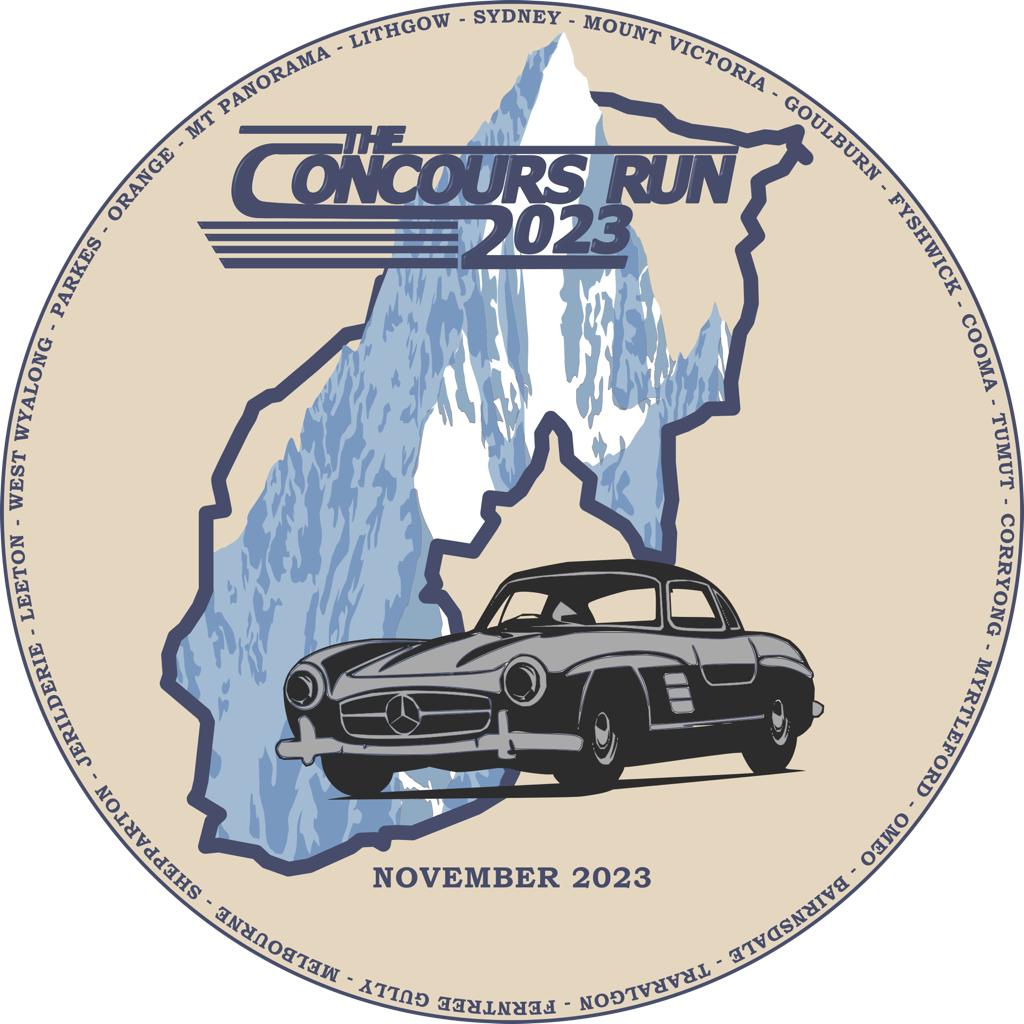
The routeA full summary of our route is available here. Our plan was to take the alpine routes to Melbourne, especially the Great Alpine Road. From there, we would enter Melbourne for the MBCV tech day on Saturday, and Concours on Sunday. Then, we would take the inland route back home, going through towns like Parkes. The Concours Run 2023 would be a little under 3,000km and about 5 days. The carsA full description of all the cars is available here. They were all classic Mercedes ranging from 1971 to 1994. All the cars made it back under their own power, although I lost an alternator on the last day. The great thing about classics is that you can often limp them home. Not the case in a modern. Taking the cars on such a run had them running better and better, and everyone on the drive had a better appreciation of their cars capabilities by the end. These are seriously capable cars and do not need to be babied. To get my car ready for the trip, I had the transmission rebuilt, replaced the drag link and had an alignment done, replaced the front and rear speakers and did a flush of the self leveling rear suspension. In my 560SEC, I did 2932km, using 356l at a cost of $792. I was probably about middle of the pack when it came to fuel usage. 
Getting thereGetting to Melbourne took two days. On the first day, we all met in Mt Victoria, where we took the excellent road down to Goulburn. From there, we called in at MB Spares and Service for a workshop tour and lunch. After lunch we headed for Tumut via Cooma. There were some excellent roads especially in the Mt Victoria to Goulburn section and the Cooma to Tumut section. A full description of day 1 is available here. The second day had some of the best driving roads on the trip. We started in Tumut and headed for Corryong, which had lovely scenery. After a break in Corryong the next stop was Myrtleford, which was one of the best driving roads of the day. After Myrtleford, we had the climb up over Mt Hotham which was an amazing experience. From there we were back on excellent driving roads again, going via Omeo to Bairnsdale. Finally we took a nice back road to our final destination in Traralgon. A full description of day 2 is available here. MBCV Garage DayDay 3 was the MBCV Garage Day. The Garage day was held at the excellent MBCV club rooms. All our members had club room envy. The day was really good, there was a short theory section followed by digging into getting a W124 260E running again. It was a lot of fun to do this and get to know some of the MBCV members. After the Garage day was a dinner with the MBCV crew, and we found time to give our cars a quick wash between those events. A full description of day 3 is available here. 
MBCV ConcoursDay four was the big event. The MBCV Concours was really well run, with over 180 well presented cars. This was not only more cars than we normally see in Sydney, but they were better presented overall. I’ve wanted to attend this event for years, and it didn’t disappoint. The MBCV concours also provided the opportunity to meet a few people I have been corresponding with on the internet for years. A full description of the MBCV concours is available here. I could have stayed for another few hours, but we had to go to meet our schedule. 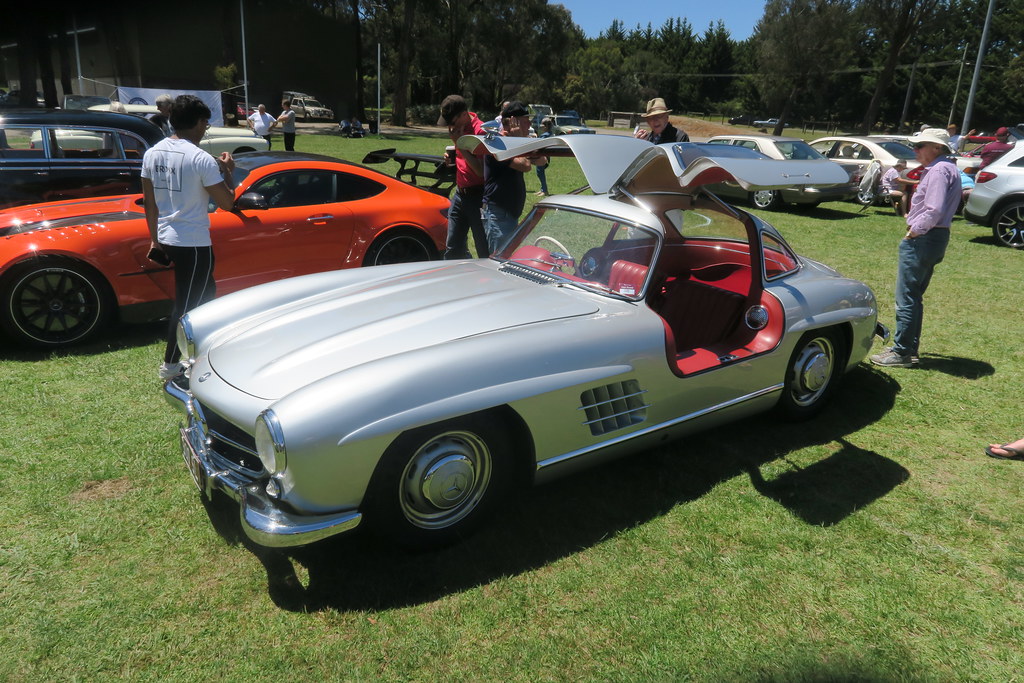
Getting BackWe left the MBCV concours at lunchtime. Our first drive was Black Spur drive, which was a great twisty road through a rainforest like ecosystem. We then got further and further into the outback, where we ware able to exercise the cars by passing road trains on the outback roads. Our destination for the evening was the historic hydro hotel in Leeton, which is an incredible old art deco building. A full description of the drive on day 4 is available here. Our final day had a mostly outback drive. We wanted to get some photos of the cars in front of the dish at Parkes, and also do a slow lap of Mt Panorama. Despite my car losing its alternator at the breakfast stop, we managed both those things with frequent battery swaps. A full description of day 5 is available here. As we parted ways in Lithgow, we all agreed what a great adventure The Concours Run had been, with a great bunch of guys seeing parts of our country that are a bit off the beaten track. 
On the Concours Run, we had 9 cars on the trip. While I don’t mention people’s names on this site for privacy reasons, this article goes through the cars that came on the drive, with some background on them and how they went. All the cars made it back under their own power, and there were few mechanical issues to speak of. They are listed in order of oldest to newest. 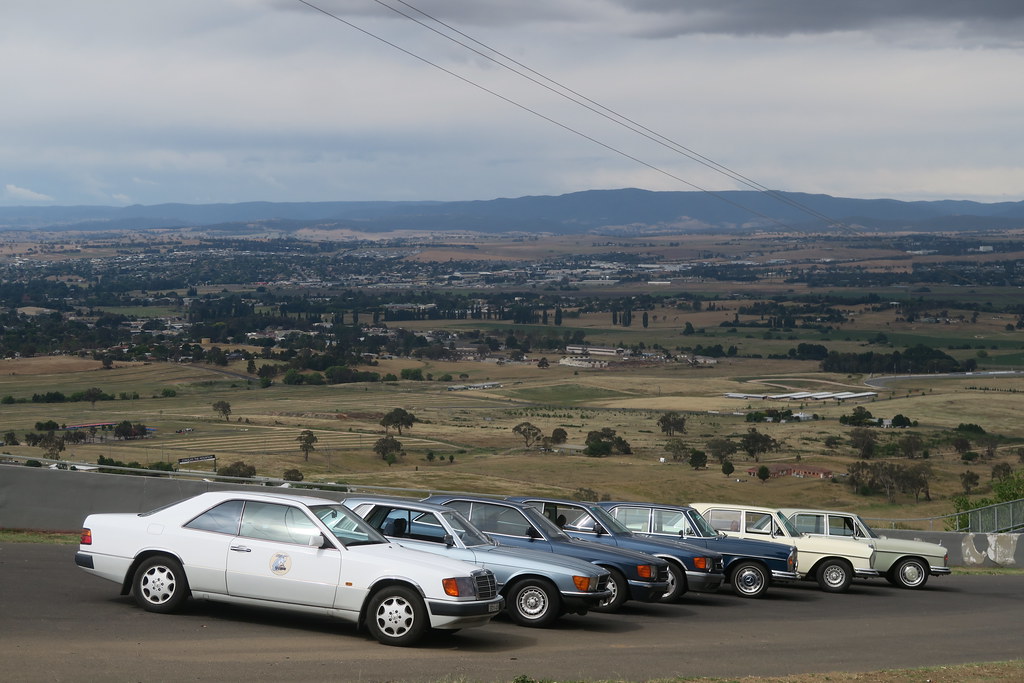
1971 280S manual (W108)This 280S was first sold in Western Australia and first registered in 1972. It is equipped with a manual transmission, when most W108s sold in Australia were automatics. Also unusual, it seems to have a custom colour, with 100ME listed as the code on the data plate. It’s hard to describe the colour, its sort of a cream with a slight green tint. It goes very well with the red interior. The 280S did really well. There were no mechanical issues to speak of, and the manual transmission made it easy to overtake trucks. It was also very good on fuel. On day four, the high temperatures impacted the driver more than the car. The 280S is fitted with a dealer installed rear A/C system that is no longer operational. 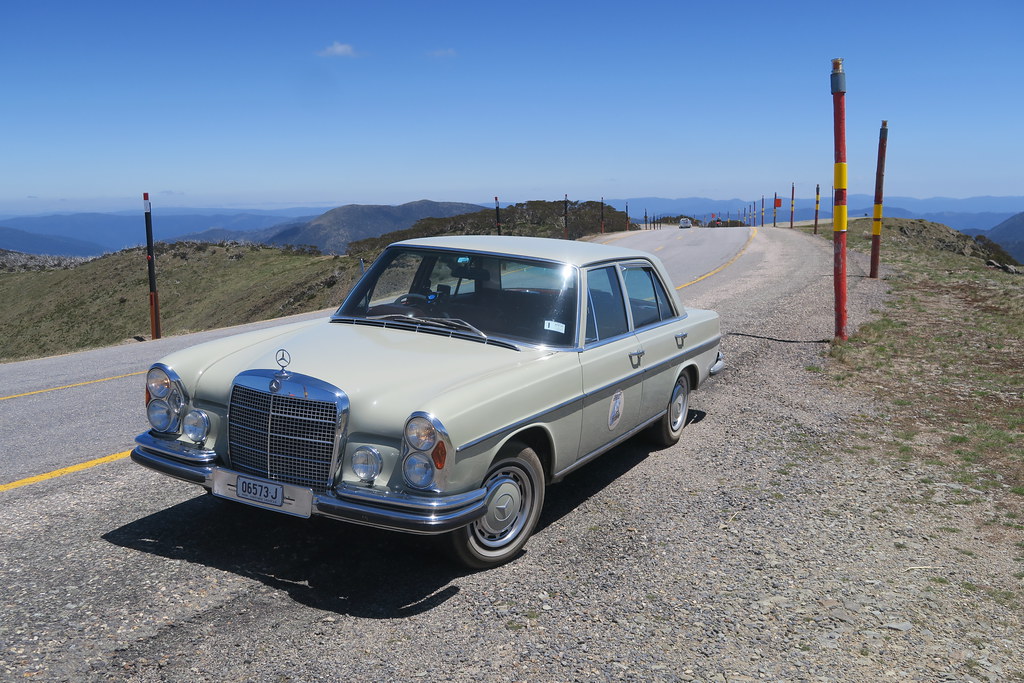
1971 280SE 3.5 (W108)This ivory 280SE 3.5 was first sold in New Zealand. It was then brought by the original owner to Australia a few years later. That is probably why it was fitted with the standard headlights rather than the Australian delivered cars that have four round headlights. As with the 280S, there were no issues at all with the 280SE 3.5. 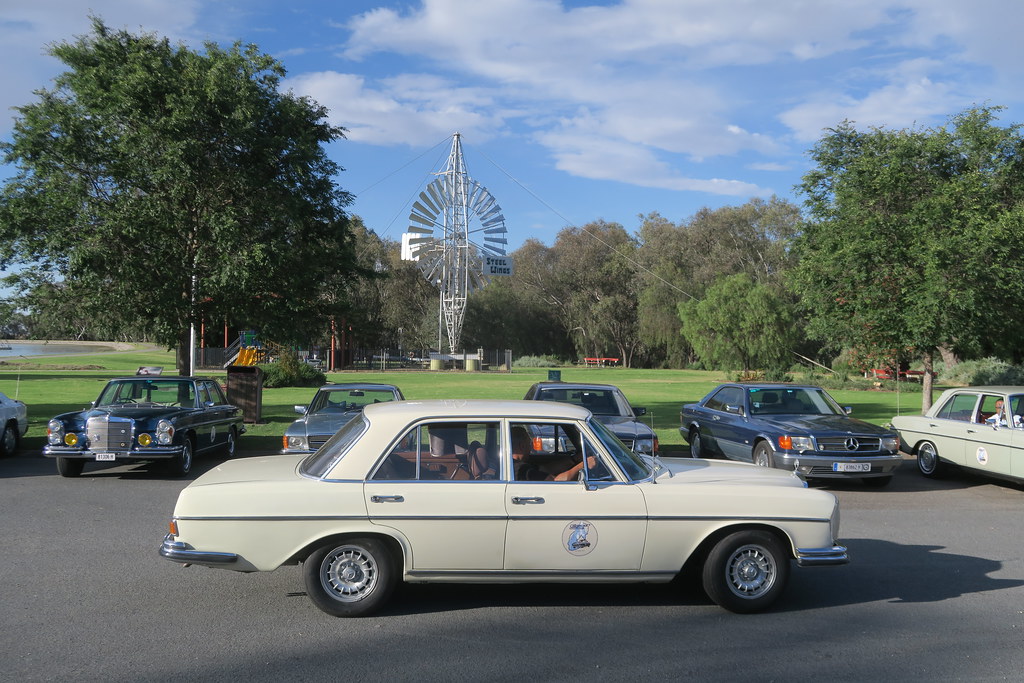
1972 280SE 3.5 (W108)The other 280SE 3.5 is fitted in a striking deep blue and was sold new in Australia, sold to an Aussie rocker in Melbourne. The current owner has actually been in contact with him and confirmed that it was his car originally. The 280SE 3.5 recently had a lot of work done on the front end, including new kingpins. Having done a short section of driving in this car on the trip, I can confirm how tight the front end is. I had never actually driven a V8 W108, having more background with the sixes. I was immediately impressed with the torque and throttle response. The car went well and didn’t have any major issues, just a couple of minor ones. At high speed the transmission was leaking onto muffler, causing smoke. It looks like it was slightly over-full. It also lost an exhaust hanger. 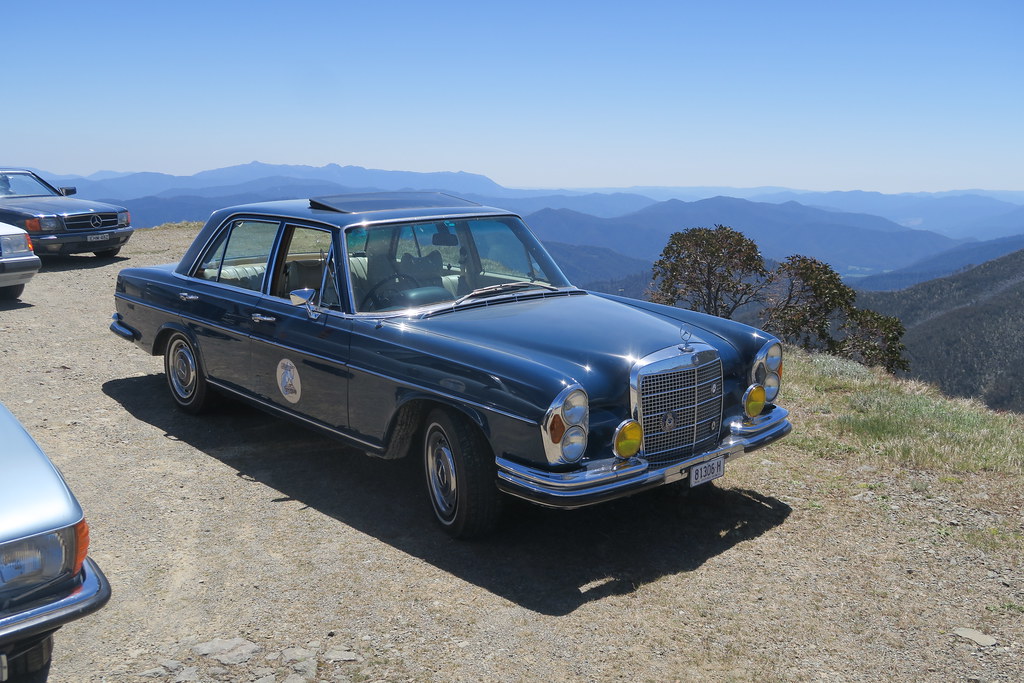
1979 450SLC (C107)This 450SLC is a low mileage example that was bought out of rural Victoria a couple of years ago. The current owner has been doing a lot of work to the car recently, including the dash out, parcel shelf out and more. It is a really nice 450SLC. It is an unusual spec for an Australian delivered car in that it was ordered with headlight wipers, but without a passengers side mirror. The owner fitted this as it makes it hard to park otherwise. The 450SLC was fairly trouble free during the trip. I think it only lost an exhaust hanger. 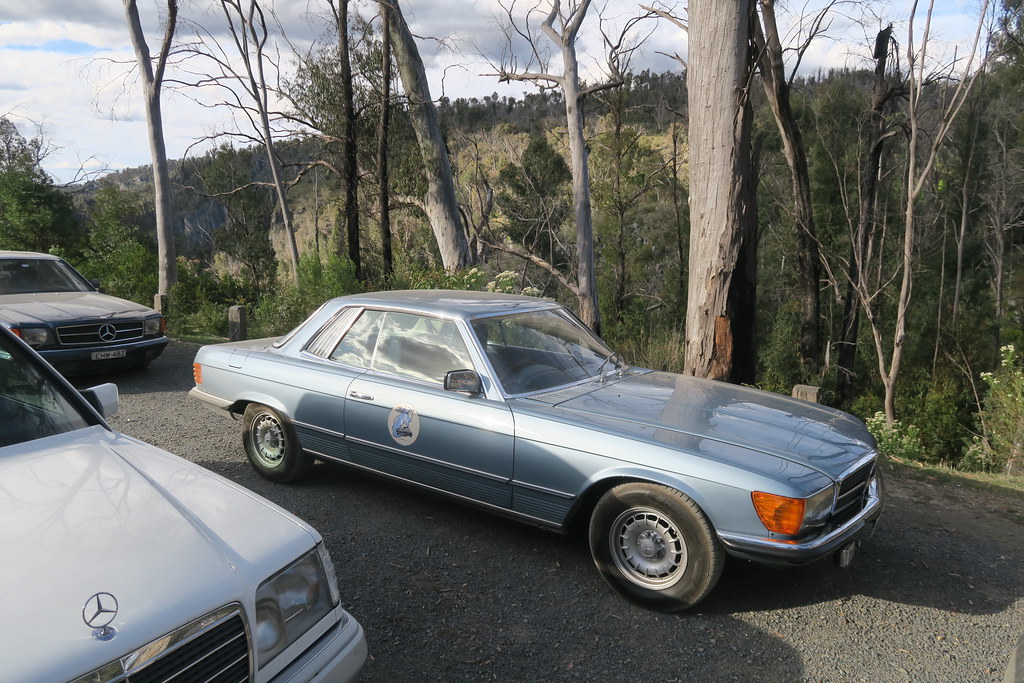
1983 380SEC (C126)This 380SEC is on full registration and is in daily use. That is an excellent preparation for a trip like this. The car is originally from Melbourne and the owner has done a lot of work to turn the car into a reliable and comfortable daily driver. This is the only car that also did least year’s drive to Adelaide, and on that drive the 380SEC also came through without major incident. The main issue was some leakage from the transmission, like the blue 280SE 3.5. Like that car, it was probably over-full. It also needs valve seals, like a lot of Mercedes V8s of this era. I had to do this job when I first purchased the 87 560SEC. This is more of an annoyance than anything. The 380SEC also helped its wounded younger brother home by offering regular battery swaps. 
1987 560SEC (C126)My 560SEC is well documented on this site. For most of the drive, it was a great road trip car. Fast, quiet and comfortable. Thanks to the uprated condenser, the AC was cold on the hot Sunday drive. Unfortunately, the alternator was not up to the task, and it seized at West Wyalong. I had to limp the car back on batteries, doing frequent changes with the 380SEC. This car is an interesting contrast with the 320CE. The SEC is more powerful, but not as nimble. The 320CE is actually faster than an Australian delivered 560SEC. 
1990 300TE (S124)This 1990 300TE is unusual for an Australian delivered car in that it was fitted with leather seats. That was a hugely expensive option, so most of them came with standard MB-Tex. On our drive into Canberra, we actually ran into the mechanic who rebuilt the engine for the previous owner. Blue/Black is not a common colour on the wagon either. This car came back loaded up most of another wagon in the rear cargo area, a testament to the versatility of Mercedes-Benz wagons. The wagon had no issues on the drive. This wagon is a great testament to the reliability of high mileage classic Mercedes – if looked after. Not many cars would be still as reliable with over 375,000km on the clock. 
1993 320CE (C124)The 320CE was a one year model, before it was replaced by the facelifted E320 Coupe. I prefer the second generation look, so if I was looking for a coupe, I would seriously consider one of these. This 320CE did very well on the drive, with no major issues to report. The 320CE is a fast and nimble car, and a good choice for the mountain roads we took. 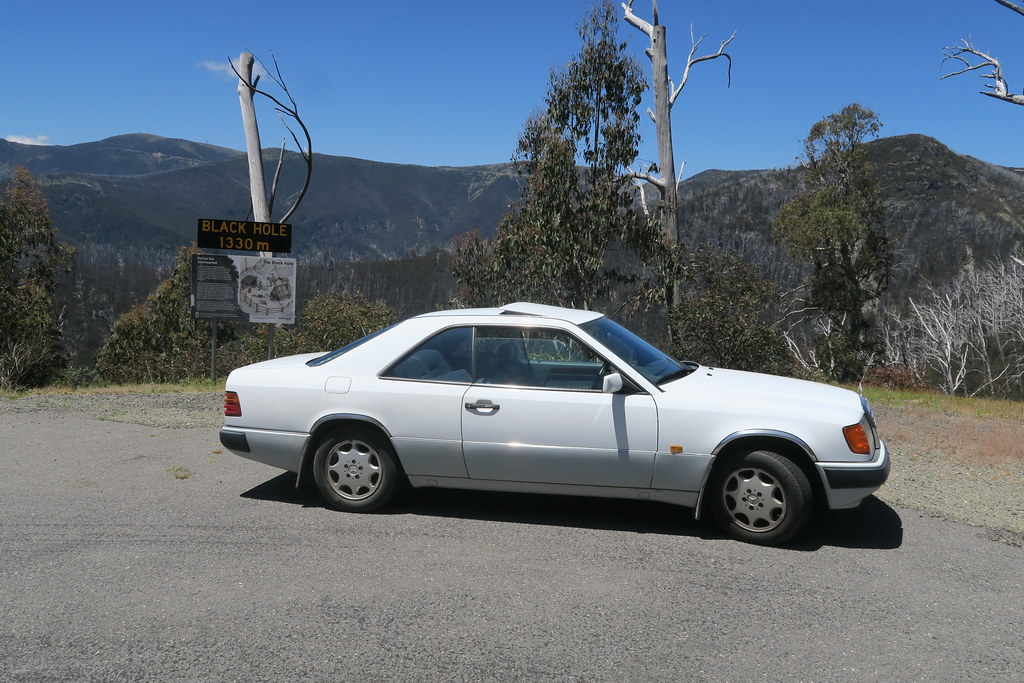
1994 E220T (S124)The newest car on the trip, the E220 wagon made the journey with no fuss. Even though it is equipped with a four cylinder engine, it kept up with its older brothers and was very frugal on fuel. It had no major issues to report. Like the 300TE, the E220 came back laden with many wagon parts. With the distinctive white roof box, it could have been in a period Mercedes brochure. The E220 also had a proper CB radio (see the antenna below). This allowed it to act as a relay point for all the cars on the drive, and to receive transmissions from quite long distances. This was very useful. 
The final day of our road trip came up quickly. After a pleasant evening in the historic Hydro hotel in Leeton, it was time to head back to Sydney. Our first stop for breakfast was a bakery in West Wyalong. The drive was 130km, and went through far more farmland than we had seen yesterday. I guess this all part of the Murrumbidgee Irrigation Area. During a stop to let the convoy regroup, I noticed a grinding noise from my engine bay. Using a hammer as a sound transmitter, it was clear the noise was coming from my alternator. I had noticed a squeaking noise from my car when cold, which I had put down to belt noise when cold. I guess 3,000km of driving has been hard on the bearings in the alternator. The noise didn’t seem too bad, so we kept going and had breakfast in West Wyalong. The home made potato pies were great! When I restarted the car, I heard a horrible belt squeal and smoke from under the bonnet. I quickly shut down the car to see that the alternator had totally locked up. This presented a problem, as we were over 500km from Sydney. We cut the belt off, and drove to a nearby auto electrician. He didn’t have an alternator, nor was there one locally. What he did have was a battery that should fit, so I bought that as an insurance policy. We also stopped by a wrecker, who didn’t have anything. While city wreckers are becoming a thing of the past due to property prices, country wreckers are still very much in business. Not surprisingly they don’t carry many parts for 80s Mercedes. We decided to keep going and see how car I could limp the car without an alternator. I ultimately managed to get the 140km to Parkes before I was down to 11.6 volts. They car was still running fine but had become rather sluggish. I was really happy about two things. Firstly, that I installed the bluetooth battery monitor a couple of days before the Concours Run, and that when I had wired up the amplifier, I triggered it off a relay from the radio. Turning off the radio turned off the amplifier. Instead of using my new battery so early, the owner of the 380SEC kindly agreed to do a battery swap. That way I would use his battery and his car would charge mine. We were not going to let a seized alternator get in the way of the days agenda, so we headed off towards the Parkes Radio Telescope for some photos. It is far further from Parkes than I remember, abut 20km towards Dubbo. 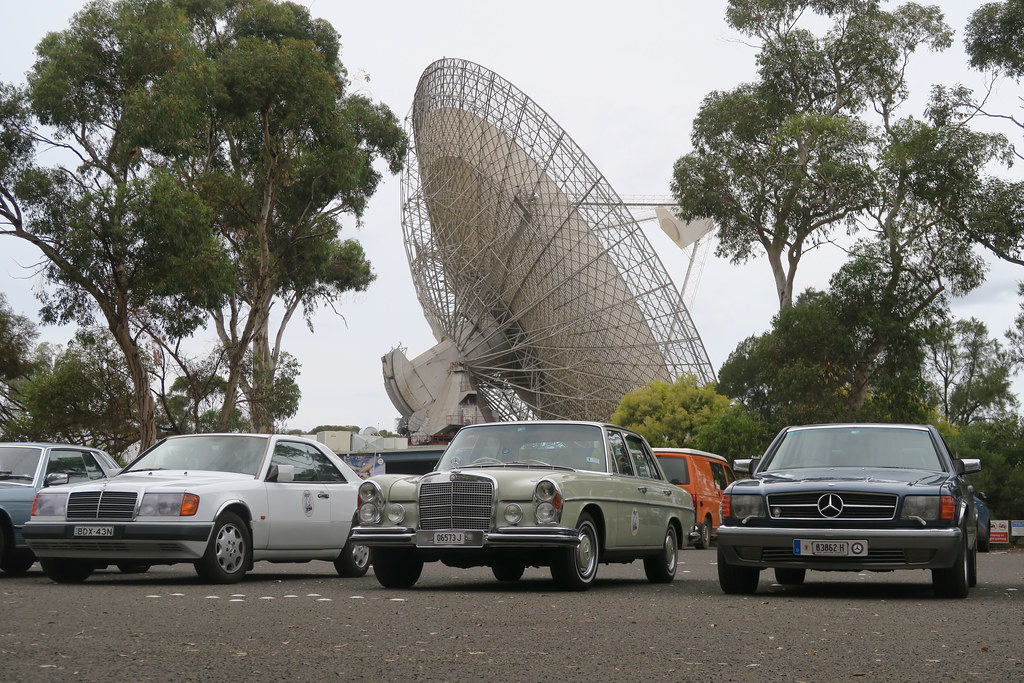
After taking some photos in Parkes, we headed off towards Orange. The drive was uneventful, as agriculture gave way to rolling hills. Orange was the location of a fuel stop, and another battery change. The 380SEC had become a mobile battery tender. The W126 has such a big battery that the other cars could not help. We also stopped in at other wrecker. While they had a D-jet 350SE with an alternator, it was very crusty and much smaller.  From Orange, our next destination was Mt Panorama. We wanted to do a lap of the track and take some photos with the cars . The track is a normal road with houses on it most of the time. But it is heavily policed and drivers need to stick to the speed limit. From Orange, our next destination was Mt Panorama. We wanted to do a lap of the track and take some photos with the cars . The track is a normal road with houses on it most of the time. But it is heavily policed and drivers need to stick to the speed limit.
We soon arrived at Mt Panorama, although a short-lived wrong turn into the shooting club was quickly reversed, as there was a live fire event going on. Our first lap was more about finding the photo locations, and the second lap was about enjoying the track. It’s my third time driving around it, and the second time in the 560SEC. 
After yet another battery swap, it was time to head to the final waypoint of the entire journey, Lithgow. We headed there, and did one final battery swap. I now had my original battery, fully charged. I also had the brand new battery in the boot. It was 5pm, and I had about two and half hours of daylight left. If I wanted to avoid a tow truck, I was going to need to get home before headlights would be required. I had found that my car didn’t use much electricity if I just cruised along. But stop and go traffic using the brake lights and indicators was draining my battery. Based on this, I took Bells Line of Road. I drove with one of our group who lives in that area, and when he peeled off at the bottom of Bells Line of Road, I had just dipped below 12 volts on the first battery. I continued taking the back way, through Annangrove road, until finally installing the brand new battery near the intersection of the Old Northern Road and New Line Road. I was down to 11.6 volts and 1% on the battery monitor. At this point, I had about 40 kilometres to go, and was confident by then I would make it. Up until this point it had been quite nerve wracking to see if I would make it so far with no alternator, or If I would be on the back of a tow truck. I guess this is what owners of electric cars go through on a daily basis. After 7:30PM, it was becoming twilight, I turned on my parking lights. I only had 20 minutes to go. I arrived home a little before 8PM, still with some reserve power. Today, I had driven 720km, 588 of it with no alternator. Total for the trip was 2932. For most of the day the instrument cluster had been lit up like a Christmas tree with warning lights. 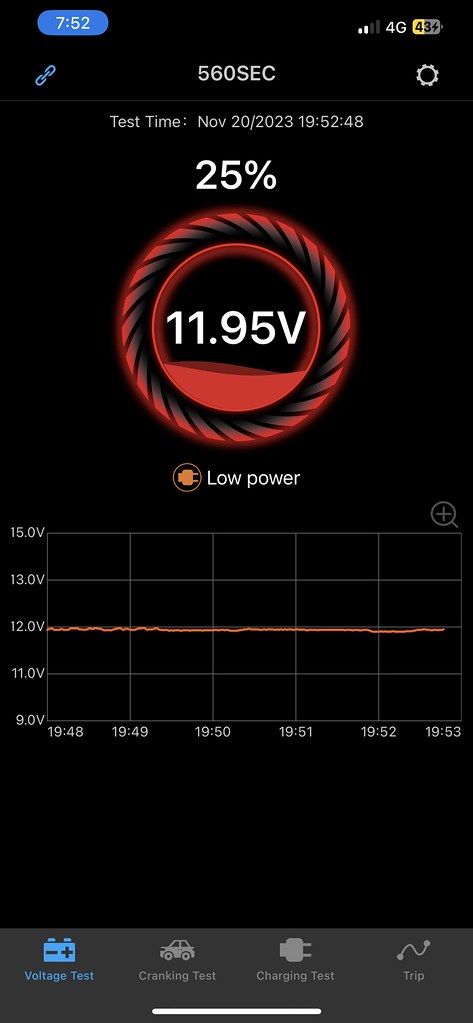
Granted an alternator is more likely to fail if it is old. However, I would not have been able to do what I did in a newer car. For starters newer cars draw so much more power, it would not be possible to drive so for long just on the battery. Those cars would also be far more sensitive to low voltage. Secondly, newer cars use a single serpentine belt instead of separate V-Belts. Even my 1990 300TE is like this. I like the separate V-Belts because you can recover from a bad accessory. I can remember cutting off the belt from the A/C compressor on my old W123 230E. Everyone else got home without incident. The trip was a big success and I enjoyed every minute of it. Day 4 was a very busy day for the Concours run group. Not only did we spend the morning at the excellent MBCV concours event, but we planned to drive 520km. Part of this was getting to the MBCV Concours event, but the majority of it was our road trip home. Our stop for the night was Leeton. Our group was reduced by two for the trip home. The owners of the two S124 wagons were staying in Melbourne another day. We left the concours at a little after 12:30PM, and headed for Black Spur drive, which I had read was an excellent driving road around Melbourne. It did not disappoint. Driving in this area was almost like driving through a sub tropical rainforest. There was a thick canopy of plants and trees including ferns and other trees that I would associate with rainforests. The road was windy and quite enjoyable. This part of the drive was still quite cool. One we got out of the forest cover, the weather started to warm up. Our first stop was Shepparton. I had originally thought that we could call in at the North End Bakehouse, which won the 2023 best Vanilla slice in Australia. Of course, I hadn’t factored in that bakeries are shut late on a Sunday afternoon, so we went to McDonalds instead. By the time we got to McDonalds, the outside temperature indicator was showing 33C. It felt it too. I was fairly comfortable with the AC on max, but two of the W108s don’t have working A/C and the occupants baked. Once we left Shepparton and headed for Jerilderie, it was clear we were starting to head into the outback. The lush forests gave way to paddocks filled with hay bales and gentle rolling hills. The vegetation was slowly getting drier. 
Once we crossed the Murray River (and NSW Border) the hay bales changed to very dry sparse grass, and patches of trees a long way from the road. By the time we reached Jerilderie, we were definitely doing outback driving, with flat arid plains as far as the eye could see, long straight roads and plenty of road trains. It was another form of exercise for the cars to pass the road trains. The 380SEC and one of the 280SE 3.5s were having some transmission issues overtaking the road trains. When accelerating hard around the road trains, both cars would eject transmission fluid onto the hot muffler causing smoke. The 380SEC looked like a crop duster at one point after passing two road trains. Checking the fluid, I think both cars may have too much, and its being pushed out of any crevice it can find when the cars are being pushed. In the end both cars performed admirably. During this part of the drive, I got to drive the 280SE 3.5. It was a very different experience to driving a six cylinder car from that era, which I am used too. There is a lot of torque. I also think the front end in that cars is ‘tighter’ than in my 250SE. I need to look into this. When we got to Jerilderie, I head the Steel Wings giant windmill was an interesting attraction to visit. Given it was late on a Sunday evening, not much was going to be open, so it seemed like a good option. In the end, it was quite an anti-climax as it really isn’t all that big. 
After Jerilderie, we headed for Leeton, and our final destination of the Hydro Hotel. This is a lovely old art deco building that was constructed in 1919. it was originally constructed to house senior staff for the Murrumbidgee Irrigation Area. It has been very nicely renovated with clean and comfortable rooms, yet still showing off the fabric of the old building. I would definitely recommend coming here for anyone passing through. We got there later than expected at 8:10PM. 
The lady on the desk was very friendly, and immediately suggested we go and find dinner as most places shut their kitchen at 8:30PM. In the end we found a local Chinese restaurant that closed at 9PM, and had a succulent Chinese meal. Today was very different driving to days 1 and 2, but equally fun. Tomorrow is the last day of the trip. It has gone fast. Today was the MBCV Concours event. This was the show that we built this whole trip around. I had wanted to attend this event for years, as I had always heard the standard of the cars was high. It always looked like a big event and with more rare older cars than we get in NSW. The event was held at Wandin East Reserve. Wandin East is a semi-rural area on Melbourne’s eastern outskirts. The reserve is a good place to have the event as there is plenty of room to park all the cars, and set up the various stalls. The weather started a bit overcast and foggy, but it soon cleared up and it turned out to be a lovely day. Our hotel was about 45 minutes from the event. Our drive there was rather scenic, and we grabbed some breakfast close the MBCV Concours event, before arranging our cars in order of age (oldest first) and driving in. MBCV had provided a row for the NSW visitors (us), so we wanted to have our cars properly arranged. 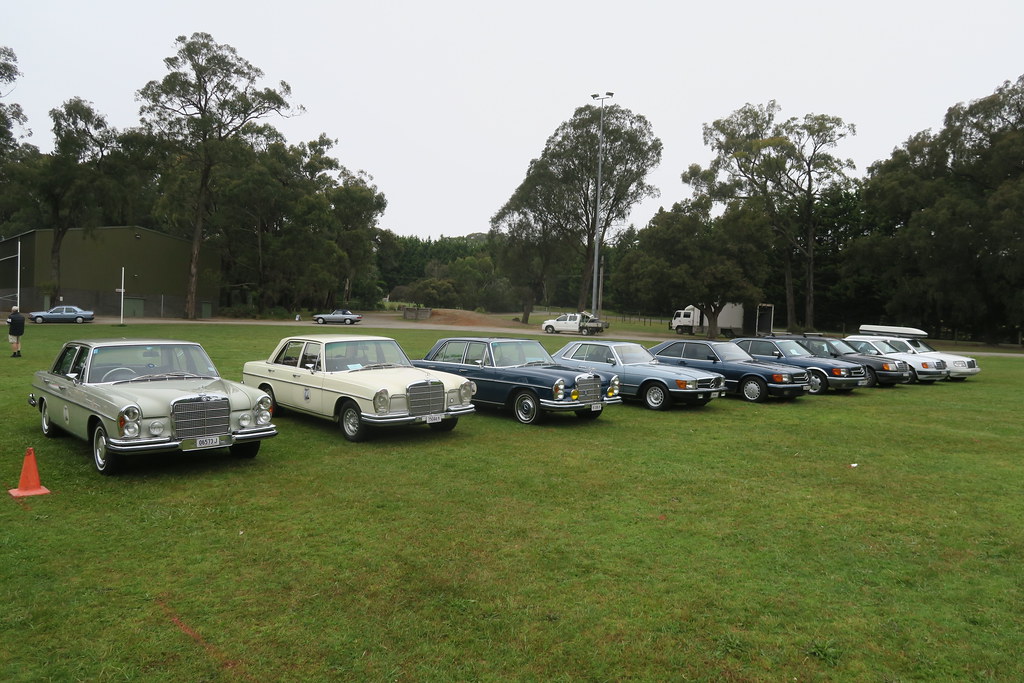
We arrived at 8:30AM, and the event was already about one third full. The cars kept coming, there we still even new arrivals after 11:30AM. There must have been at least 180 cars, all Mercedes-Benz and mostly classics. We all agreed the show was excellent. There was more variety than we see in NSW, and overall the standard of presentation was higher. There are less rare and unusual cars in NSW, but more concentration of specific models. At the MBCV concours, they had a Gullwing, more pontons, a 170 and various other interesting cars. It was good to see three W111 cabriolets on display. It almost made me wish I had brought mine. The two 280SE 3.5 cabriolets were very nice. As well as seeing the cars, It was also great to meet a few MBCV members I knew from the various facebook groups and forums. it’s nice to put faces to names after so many years. The MBCV Concours was extremely well organized, and I really enjoyed it. We stayed until 12:30 and could have stayed a few hours more if we didn’t have to get on the road to head back to Sydney. The third day of our classic Mercedes road trip was focused on a MBCV Garage Day. The subject was electrical troubleshooting. However, before we could have the MBCV Garage day, we had to get there. We started in Traralgon, and drove to Ferntree Gully (A suburb of Melbourne) to the MBCV club rooms for the garage day. For the once and only time on this trip, we took the motorway. I guess in keeping with this trip, while it carries the ‘M’ designation, it wasn’t really a proper motorway as it didn’t bypass many towns. The drive in was uneventful, and after a quick breakfast stop, we arrived at the MBCV Club room. We were all blown away by how great a setup MBCV have. The club has purchased a strata industrial unit, and kitted it out as an ideal club room. On entry, there is a small lobby with various trophies and club memorabilia. To the left is a meeting room, and upstairs is a mezzanine with a few other rooms, for example to store technical literature and brochures. The main part of the warehouse is open plan and has a hoist and a well set up set of tools. 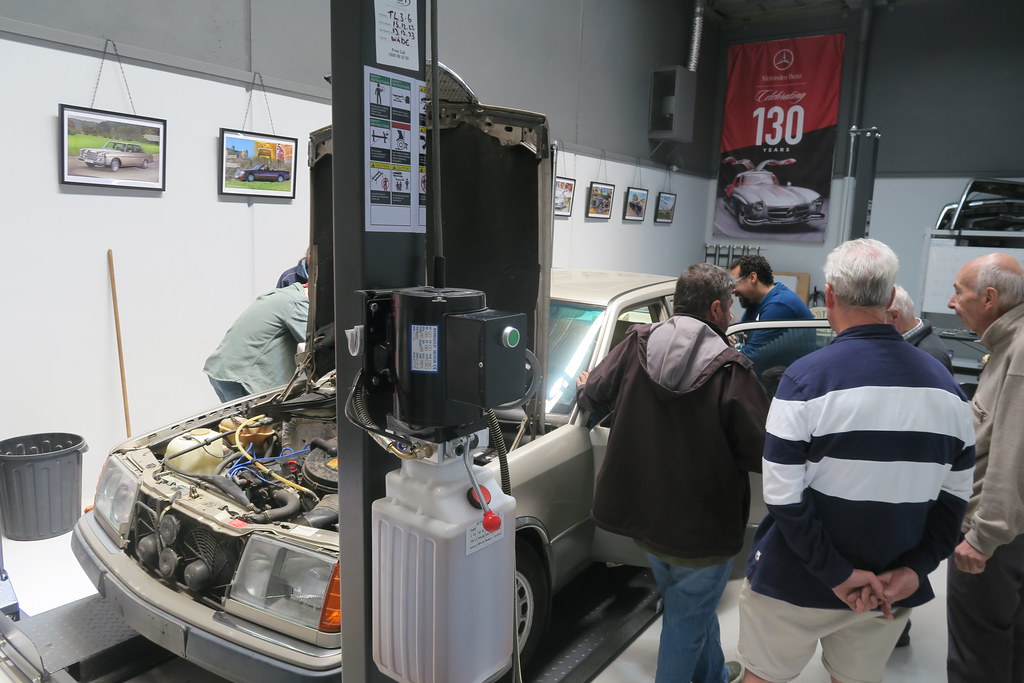
The main space is highly versatile, as it can be kitted out with folding chairs for club meetings or workshops, or used for a garage day. The club also run a tool loan program from the club room, and store their club trailer and other equipment. Being in an industrial estate is perfect for the club room, as most of the time all the parking is free when club events are running (weekends and evenings). Having the club rooms was integral to the the relaxed nature of the MBCV garage day. I understand MBCV runs these events regularly at the club rooms. Its something that the MBCNSW really should consider. I understand MBCV had a couple of hundred thousand dollars in the bank, and borrowed a couple of hundred thousand more to purchase the rooms and kit them out. In addition, they had volunteer help and working bees to really set up the club room well. The location of the club rooms was chosen in a place central to most members. Todays MBCV Garage day had all the NSW visitors as well as 10-15 MBCV members. It was a good amount. The day started out as an informal catch up and an opportunity to check out the other members cars. Most MBCV members had arrived in W124s, but there were a few others like a W123 and a W220. 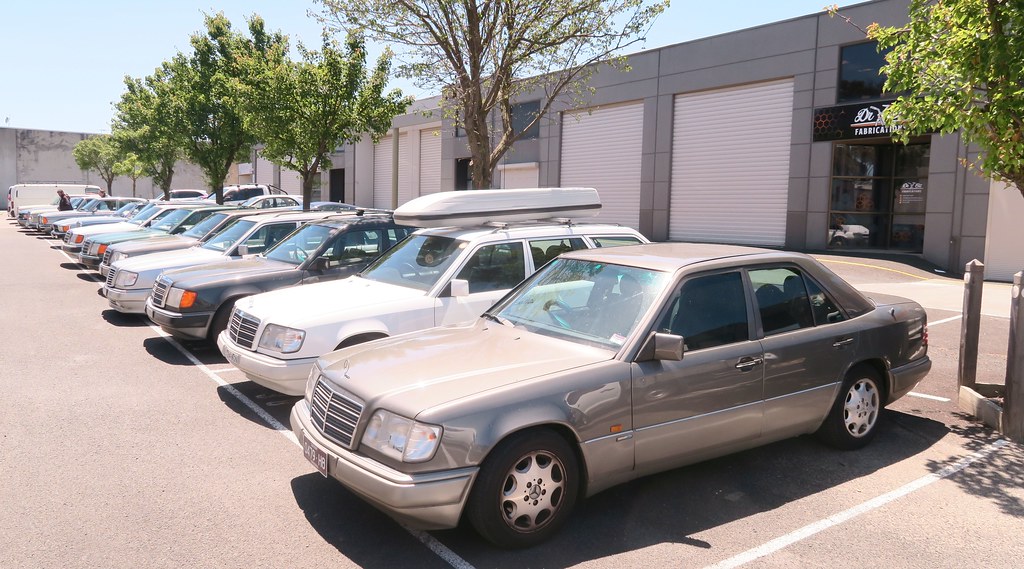
From there, there was a short section on electrical troubleshooting theory, followed by some examples to practice on. Those examples had issues that could be found using a multimeter. 
After lunch, there was the core focus of the day. One of the MBCV members had recently purchased a 1989 260E W124. The car was fitted with an aftermarket car alarm and immobilizer. The problem is that the car is permanently immobilized. The previous owner went to drive it, found the car immobilized, and then parked it up for at least a year. The current owner purchased it, and it became our electrical troubleshooting guinea pig. Our working theory was that the aftermarket immobilizer had failed, permanently immobilizing the car. We started by removing what we could of this system. Our theory was that the system worked by cutting some of the factory wires, and sending them to the immobilizer control unit to only let current pass when the system allows. We were able to sort out the starter motor this way, but not the fuel pumps. 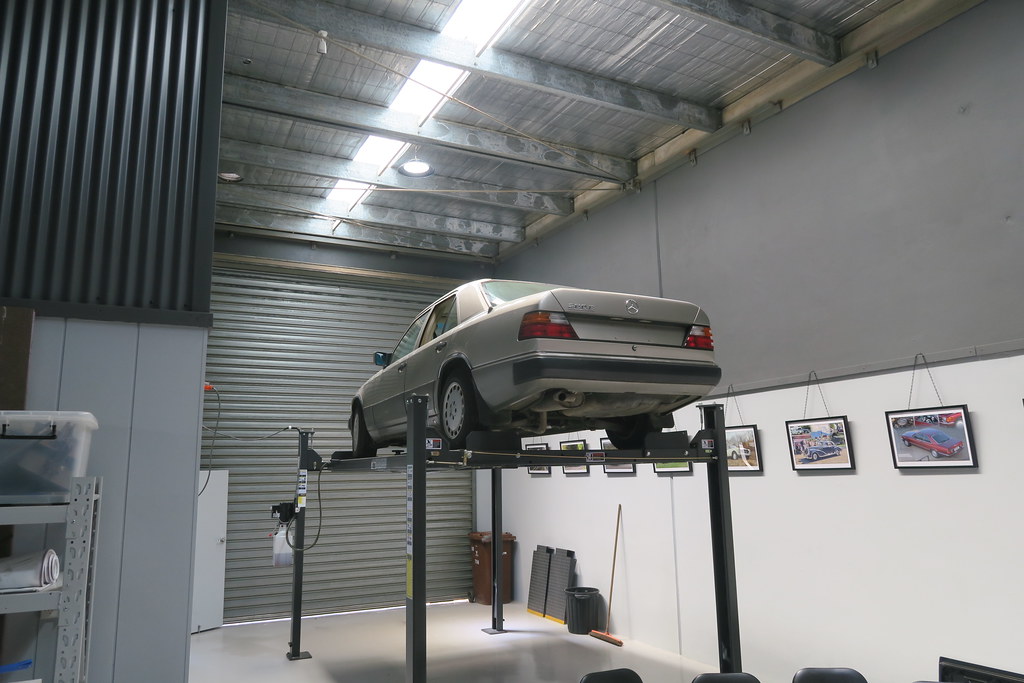
After pouring over the wiring diagram, we worked out the factory wire should be red, white and black. Starting a the pumps, we started to work backwards to find where the system had power. The system did not have power at the pumps, or the plug connection under the rear seat. However in the passengers foot well, it did. I really enjoyed the tech day – it was nice to have an informal focus on fixing a members car and discussing the common problems everyone had. After the tech day, I also purchased some W124 spares from an MBCV member. I managed to fill up the back seat of the 560SEC with various trim pieces for a beige wagon interior. Some of them quite large. 
After picking up the parts, I went to a self service car wash to clean my car up for the concours tomorrow. It was quite a good setup. By this time I was running late to get back to the hotel to meet the rest of the group. I selected the eight minute wash, and it did a good job. After seeing the car dry, I realize I missed some of the caked on dirt on the Sacco panels. I was too focused on getting the bugs off the front. 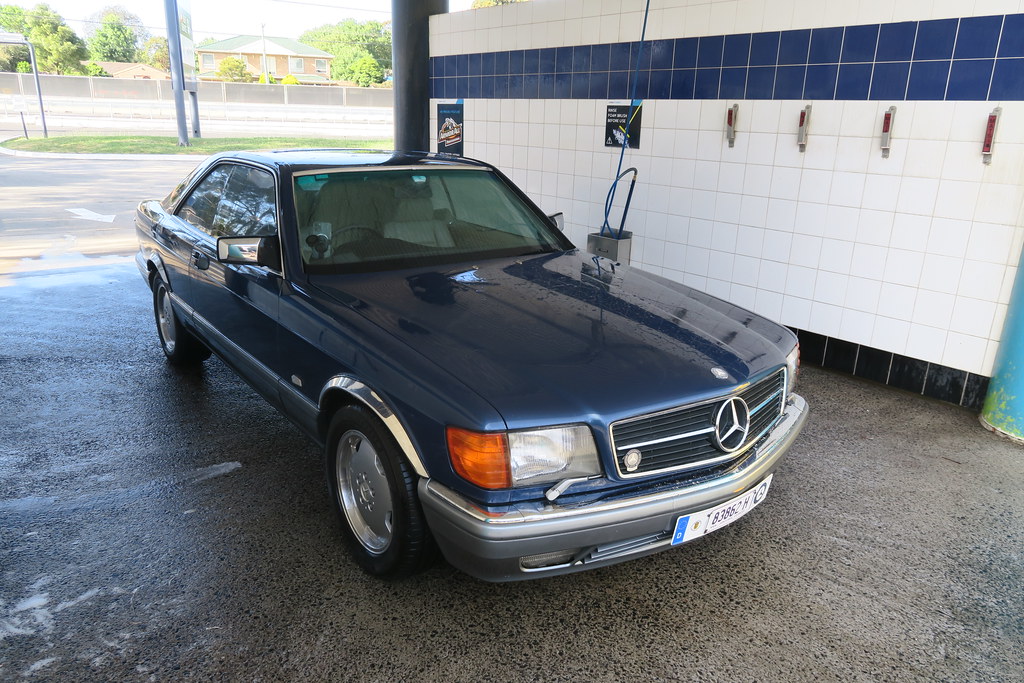
After the wash, it was time to check int our hotel, the Parkroyal Monash Melbourne. The two main factors in choosing this hotel was the secure undercover parking, and proximity to the dinner event. It was great to have the undercover parking, although getting into the parking was the most frustrating experience I’ve ever had parking. We had to park on level B2, but couldn’t find it. We were told to follow the red line. The red line or ramp to B2 was nowhere to be found. 
The shopping centre had installed some kind of number plate recognition software, and it didn’t work. It took at least two minutes to recognise number plates, and some cars took far longer. Not sure if they were paying or speaking to an operator. To simply get our cars to B2, it took about 40 minutes. From there, we went to a local Golf club to have dinner with some of the MBCV members before the show. I had a great day. I got to meet some MBCV members I have spoken to on many occasions, but not actually met. Not only that, but I also got to attend a very enjoyable MBCV garage day. In the course of the day, I covered 198km. Tomorrow is the show. The second day of our classic Mercedes road trip between Sydney and Melbourne focused mostly on driving the Great Alpine Road (B500). On Day 1, we started in Mt Victoria and ended up in Tumut. 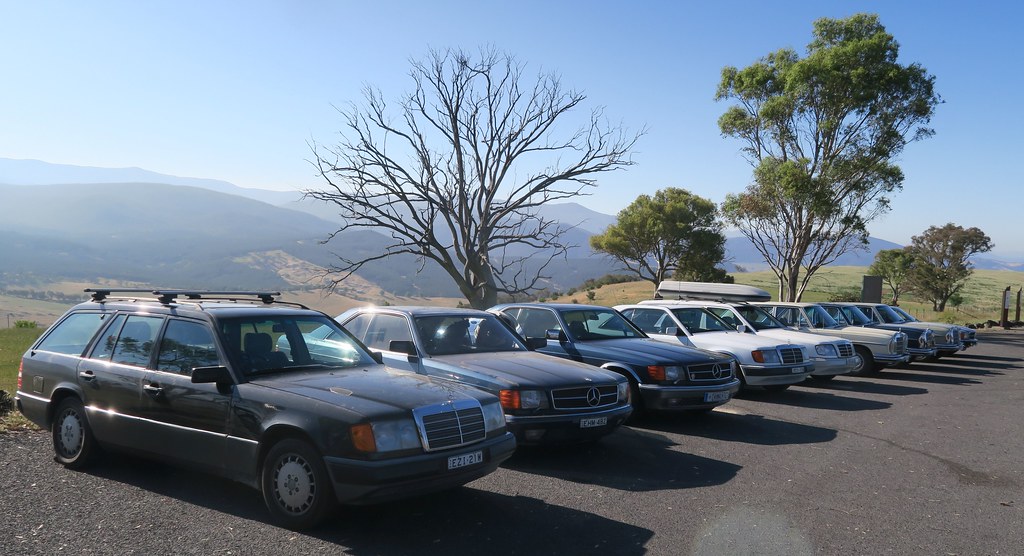
We started early, at 6:30AM to maximise daylight hours. Our destination was Corryong for a breakfast stop. This first leg was rather scenic and we stopped a few times to get some good photos of the cars at various spots. At Corryong, we had breakfast at a country bakery, before heading off to our next destination, which was Myrtleford. 
The road between Corryong and Myrtleford was one of the best driving roads of the trip and we did less stops on this leg as we focused on enjoying the driving. Everyone in the group enjoyed exploring the capabilities of their cars. The route had all the things you would expect on a good driving road – twisty sections, sweeping corners, changes of elevation and great scenery. I really enjoyed using the full power of my 560SEC ECE overtaking trucks up steep hills. The most challenging leg was next. From Myrtleford to Omeo, the road took us over Mt Hotham. This section of the road rises to 1,840m in elevation. By world standards, this isn’t all that high, but its about as a high as a road gets in Australia. 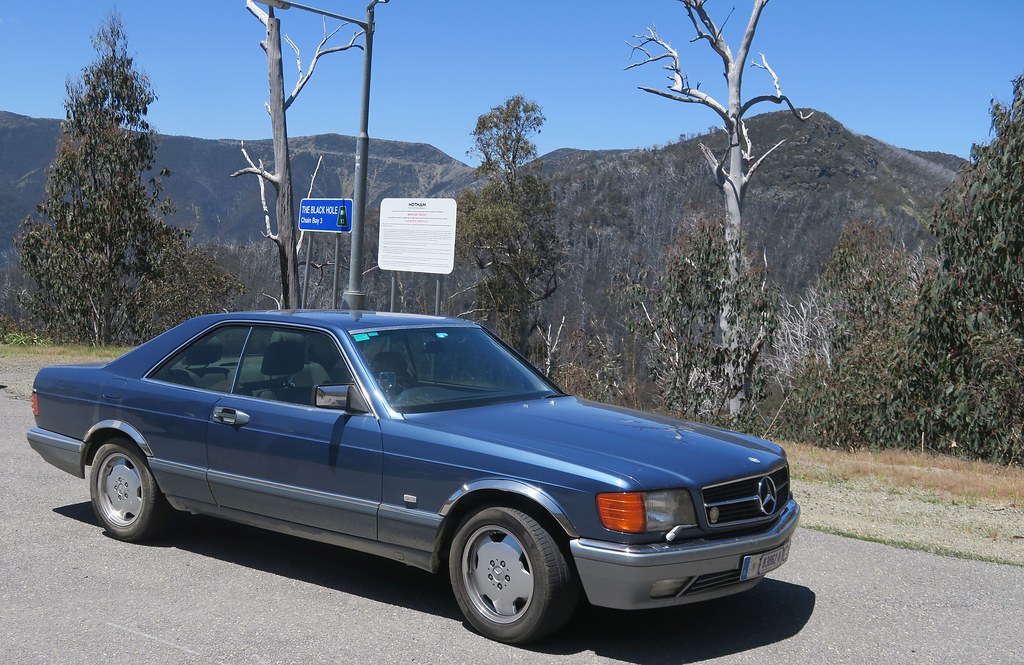
The first part of this road was kind of boring, but as we started to gain elevation, it showed it’s true colours. The southbound climb was extremely steep, and featured constant hairpin turns. The road was narrow, and there were no shoulders to speak of. There were sheer drops of hundreds of meters from the edge of the road, and few of these sections had guard rails. Even worse, various sections of the edge of the road was crumbling away into the abyss below. I don’t know if it is that some people have no fear, or a generally food hardy nature but I saw some motorcyclists really gunning it down the mountain. In this case, leaning over with their wheels centimetres from the sheer drop. As well as that, there was a constant stream of cyclists riding at high speed down the hill. Having seen many Utes with trailers, it looked like many of them are trucked up to the top to descend the mountain. 
Given the speeds and cyclists it took us quite a while to ascend the mountain. I’m normally one of the faster drivers in the group, but in this section I was one of the slowest. I did not want to be anywhere near that edge. While I had the line of sight to drive on the wrong side of the road, I did. I got slower and slower as we got higher and higher and the margin for error became smaller and smaller. There was probably great scenery out the window, but I was two focused on gripping the steering wheel as hard as I could and looking at the edge of the road. Eventually we reached the summit for a few photos. It was still very clear when fire came through this area. The dead trees on the mountains looked like grey whiskers from the top. All nine of the cars had done really well and reached this point without any real incident. 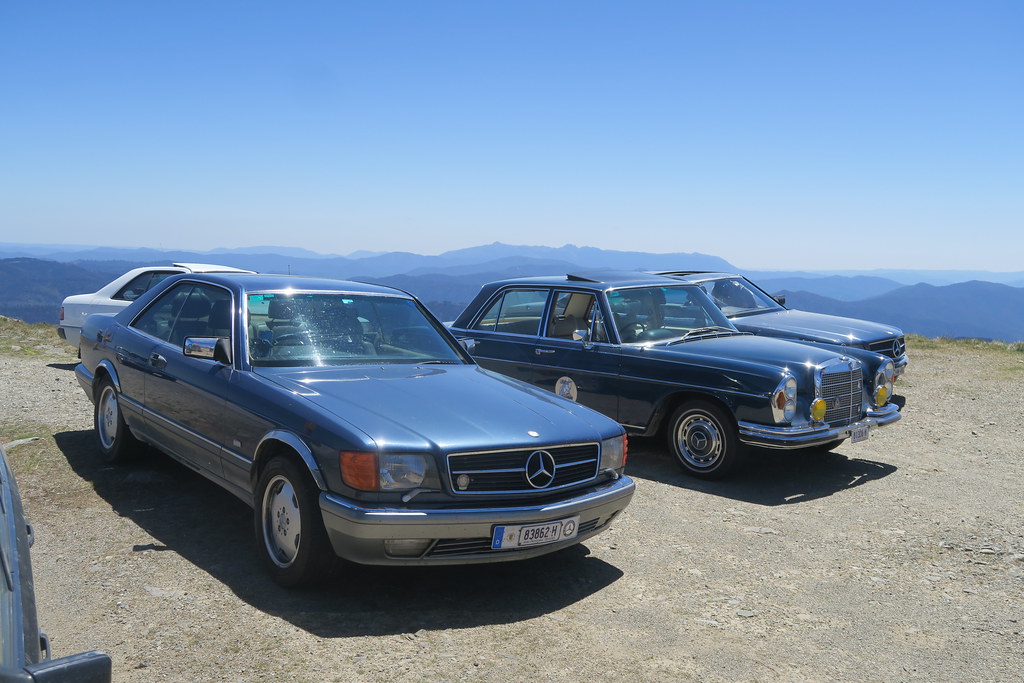
At this point I wasn’t especially looking forward to the decent, assuming more of the same. I couldn’t have been more wrong. The decent was long sweeping corners with a much wider road, shoulders, and no sheer drops. We were able to resume normal operations and explore the capabilities of our cars again. We stopped at another excellent country bakery for a break and a quick bite to eat. The country bakeries are great because they mostly make what they sell. It shows. Our next leg was another great driving road. It was a long twisty section along a river. Event at the speed limit of 100km/h it was possible to push our cars quite hard – and we did. A few of our group had never driven their cars like that before and came away with a new respect for their capabilities. Our final leg of the day took us from Bairnsdale to Traralgon. The first part of this leg we skipped the mind numbing A1 and took the C106. However, once we hit Sale we joined the A1 until we got to Traralgon. We stayed at the Mantra. While it is more expensive than other options, It has undercover parking. 
In the day’s driving, I had completed 686km at 13.5l/100km. I am quite happy with that given the type of driving we did. Yet again ,the W108 3.5’s continue to impress with their performance and frugality. There are not many cars from 1972 you could drive like that, on roads like that, and get fuel consumption figures like that. Everyone on the trip has remarked how much better their cars are running after the first two days of this drive. Classics need to be used properly, and few are. At dinner after we checked into the hotel, a few of our group remarked it was probably the best day of driving they have done. It was certainly up there. The Great Alpine Road is well worth the trip. Today was the first day of our epic road trip to Melbourne in 9 classic Mercedes Benz. Our goal was to head down for the annual MBCV concours event and a tech day they were running the day before. I previously covered the plan for the trip. Our destination today was Tumut. Before we even started, we lost one of the cars. One of our group had purchased a lovely ‘new’ W108 280SE 3.5 earlier this year. It’s a really nice car, but it had not seen a whole lot of use in recent years. Unfortunately all the work required to get the car ready for a trip like this was not complete. Its the usual thing with classic cars. The more they are used, the more reliable they are. Our route started in Mt Victoria (Sydney’s Blue Mountains) at 6:30AM. Therefore, five of us elected to stay up there the night before on an unofficial ‘day 0’. I was one of them. This meant for a much easier start. Two more of our group lived somewhat locally and elected to meet us at the starting point ,and two more skipped the first leg and planned to meet us at Goulburn. The seven cars doing the first leg met without major incident in Mt Victoria. The only minor issue was that one of the W108’s had a snapped a handbrake cable that morning. For our first leg, we had seven cars – three W108s (Two 280SE 3.5s and a 280S, two C126s (my 560SEC and a 380SEC), a 450SLC and a 320CE. 
Our first leg would take us from Mt Victoria to Goulburn where we had planned to meet the other two people at the Big Merino. The road from Mt Victoria to Goulburn is one of my favourites in NSW and it didn’t disappoint today. There was very little traffic at all, and the road is a delightful combination of twisty sections, long sweeping corners, elevation changes and amazing scenery. It is one of those roads you can have fun driving at the speed limit. 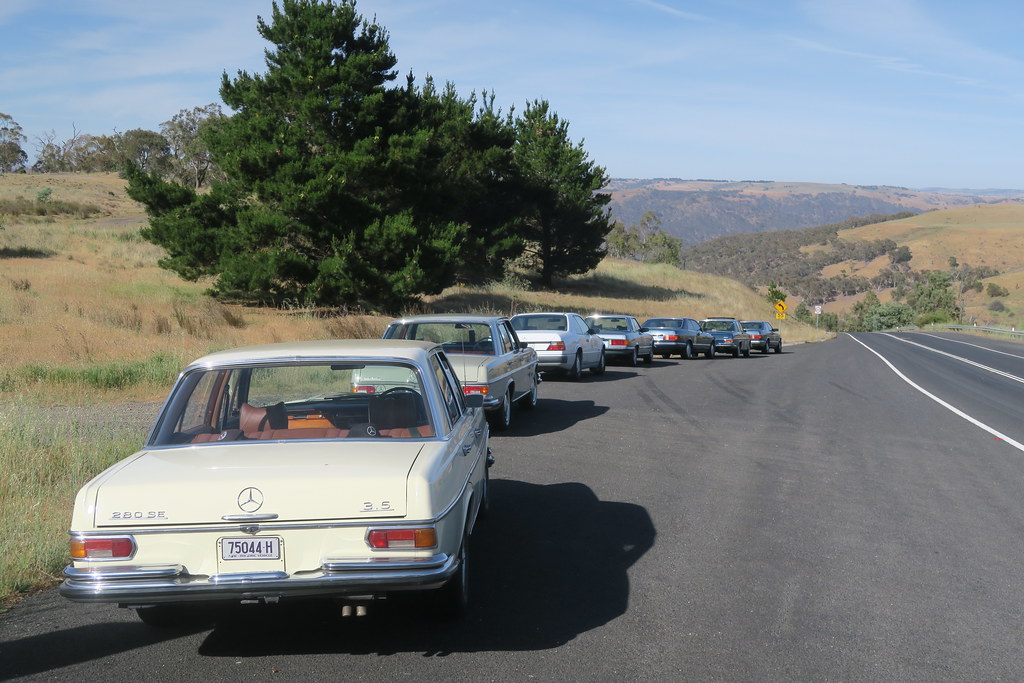
We stopped for Petrol at the Big Merino, were the two W124 Wagons joined us, namely an E220 and a 300TE. At our fuel up, it was interesting to note how good on fuel the two 280SE 3.5s are. This is especially impressive, given the W108 has all the aerodynamics of a brick. The W108s did better than both W126s for eample. 
From there we took the back roads towards Fyshwick to our lunch stop at MB Spares & Service. It was great to catch up at MB Spares and see some of the projects they have going. Of particular interest was some very interesting factory literature, some very rare cars in the workshop, the rebuild of a factory 617 turbo diesel and see a wrecked 560SEL that was an amazing demonstration of the rigidity of the W126 passenger safety cell. It was very good of John, the owner of MB Spares, to host us for lunch. 
After lunch, the next stop for our convoy was Cooma. The scenery gets progressively better along this route, but it probably the least interesting that we did today. What was apparent was how well all the cars were responding to a good run. After we had a short break at Cooma, the final leg of the day was to Tumut via the Alpine Way. However, before we left Cooma, we called in breifly at Flynn’s wrecking yard, which is the biggest in the Southern Hemisphere, and can be seen from space. Given there was a $10 entry fee, and it wasn’t clear how many Mercedes-Benz they had, we didn’t go into the actual yard and kept going. 
The Alpine way was the only part of todays drive I had not done before and I really enjoyed it. It was a really fun road through some amazing scenery. One of our group suggested a stop off at Yarrangobily Caves Thermal Pool. This didn’t turn out to be quite as good as we had hoped. The road to the pool was one way, and quickly became unsealed. The owners of the W108s were not enthusiastic about taking their cars down that road. We did get there in the end, and take a few photos of the cars, but there wasn’t really time to do much more, as we wanted to get to Tumut before it started getting dark. Driving on the back roads in Australia at dawn and dusk means a high chance of encounters with the local wildlife, especially Kangaroos. I know this all too well. 
Our group rolled into Tumut about 7;30PM. According to my odometer, we covered 634km today. Given the core route was 585, this made sense for the various small detours we did. We checked into our hotel in Tumut and went to a local pub for dinner. Our first day was really good, especially how we all arrived without incident. I’ve been very happy with how the 560SEC has performed on this trip. Its been fast, powerful and comfortable, and the A/C has kept me cool. Last year, I went on a 4,000km road trip with some friends from the Mercedes-Benz club to the National Rally in Adelaide. We all took classics, and we took the scenic route there and back. In may ways, the trip there and back was better than the event. For 2023, while there was no National Rally, we were keen to do another. We picked the Mercedes-Benz Club of Victoria’s annual concours event. I’ve wanted to go to this for years, as I had heard the standard of the cars at this show is very good. In addition, at a S124 tech day earlier this year, another group was thinking of going down to Melbourne to do another tech day. We decided to join the two groups and attend both events. To make it manageable, we put a cap of 10 on our group, and started planning. The distance to Melbourne is shorter than Adelaide, so it will mean that we need to do less driving per day. I’m taking my 1987 560SEC. I’ve been doing work to get it ready for the drive including having the transmission rebuilt, replacing the drag link and upgrading the front and rear speakers. This time I will not be the oldest car on the trip. There are four W108’s coming along – three 280SE 3.5s and a 280S manual. I had considered bringing my 250SE, but it still has a few things that require sorting out before I would take it on such a long trip. 
As with last year, we have a trip logo and will have magnets for the side of our cars. One of our group made this really cool image of our route for the logo. Also based on our experience last year, we will have more powerful walkie talkies. We purchased the Quansheng UV K5 from Ali Express for our group. We’re going to have a great convoy of cars for our group. We’ll have the four W108s already listed above, plus two C126s, a C107, a C124 and then either one or two S124s. Our route was selected to avoid motorways wherever possible. Motorway travel is very boring and the whole point of this trip is to enjoy some good roads and see the country in classic cars. 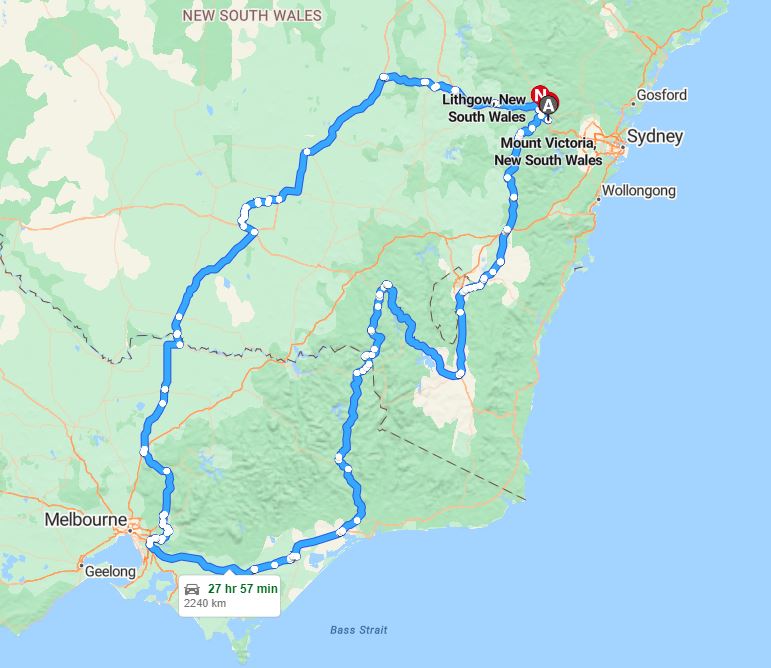
Day 0 – Sydney to Mt VictoriaOur official route starts at 6:30AM the next morning at Mt Victoria. Since most of our group live a fair distance from Mt Victoria, most of us will stay at a pub overnight. We will each make our own way up to the pub. Day 1 – Mt Victoria to TumutOur morning will take the excellent road between Oberon and Goulburn. I’ve done this road a couple of times now and its one of the best driving roads in NSW. There is very little traffic and its a great mix of twisty sections, sweeping bends and straights. After a short break in Goulburn, we’ll head to Fyshwick via Tarago and a stop at MB Spares and lunch nearby. After lunch we’ll drive south to Cooma, before heading up towards Tumut via the Alpine way. Tumut will be our stop for the night. Total driving for Day 1 will be 585km. Day 2 – Tumut to TraralgonDay two will take us through the high country roads from Tumut to Bairnsdale. For much of the day we are on the scenic B500 Great Alpine road. This is supposed to be a great driving road with some nice places to stop along the way. Our final leg will take is into Traralgon, our stop for the night. We will have covered 524km. Day 3 – MBCV Tech DayThe main purpose of Day 3 is the tech day with MBCV members. We’ll drive into Melbourne from Traralgon, and head to the MBCV club rooms at Ferntree Gully. The focus of the day is electrical troubleshooting. We’ll start with a theoretical section on using a multimeter for voltage, amperage and resistance settings. After that, our host will have prepared a couple of cars with specific faults for us to use our new skills to troubleshoot. There should be most of our group and 10-15 MBCV members. Dinner is being hosted by MBCV. We’ll have a private room in a local club. Day 4 – MBCV Concours and drive to LeetonThe MBCV concours will be held at Wandin East reserve. We’ll spend the morning at the concours, and the MBCV have prepared a section for our cars to park. Early in the afternoon, we’ll head off and start our journey home. We’ll take Black Spur drive out of Melbourne, which is apparently one of the best driving roads in the area. We’ll head north to Leeton via Shepparton and Jerilderie. Our stop for the night is the historic Hydro Hotel in Leeton. Day 4 takes us 447km. Day 5 – Leeton to Lithgow and home.Our final day takes us inland towards home. We’ll head to Parkes via West Wyalong. It should be possible to get a few photos of the cars with the dish behind them. From there, we’ll head to Mt Panorama via Orange. We’ll be able to do a slow speed lap around the track at Mt Panorama. This is a normal road when there is no racing, although speed limits are very low and very aggressively enforced. We’ll head to Lithgow before the convoy breaks up and we go our separate ways. Day 5 takes us 633km. Last night I finished the installation of the refurbished W124 instrument cluster. I’m really happy with it, and its really lifted the car. I ended up installing it as part of my failed attempt to change the centre vent. Even after changing the bulb, the vent illumination was not working. I realized that it must require the instrument cluster to be plugged in. This proved to be the case, and also fixed the illumination for the outside temperature gauge. Before I re-installed the cluster, I added more ATF to the speedometer cable. This is an attempt to lubricate it and stop the speedometer needle bouncing around at low speed. I then plugged in all the electrical connections. Most of them had plenty of slack, so this part of the job was quite easy. Re-attaching the speedometer cable is more fiddly as there is minimal slack. I didn’t push the cluster all the way in and did a test drive around the industrial complex. It was soon apparent that the bulb that illuminates the left hand side had blown. I had one left in my box of bulbs, so I quickly swapped it over. If you own these cars, its really handy to keep spares like this on hand. On the less positive side, I can’t say that the ATF has really helped my speedometer needle a great deal. It is improved, but not by very much. It was worth a try. 
Given that you are sitting in front of the instrument cluster the whole time you are driving the car, I think is a very worthwhile improvement. I find these sort of projects really make a big difference. My refurbished W124 instrument cluster wasn’t all that expensive and only a few hours work. It is especially apparent when compared to how it was. 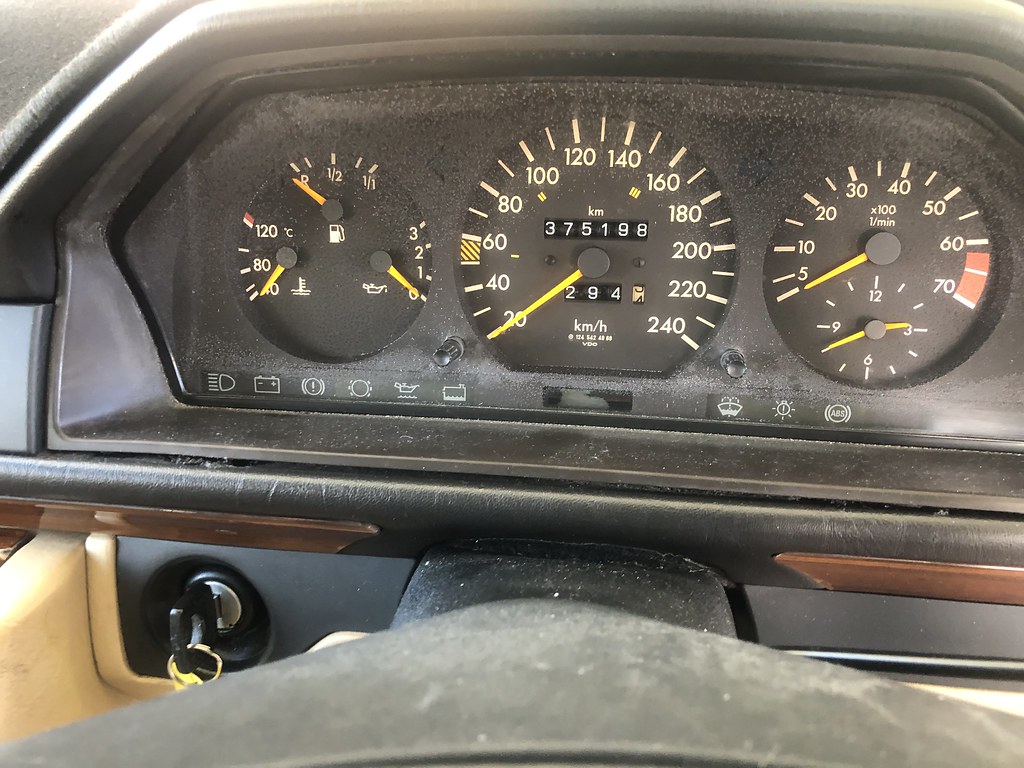
| |




























